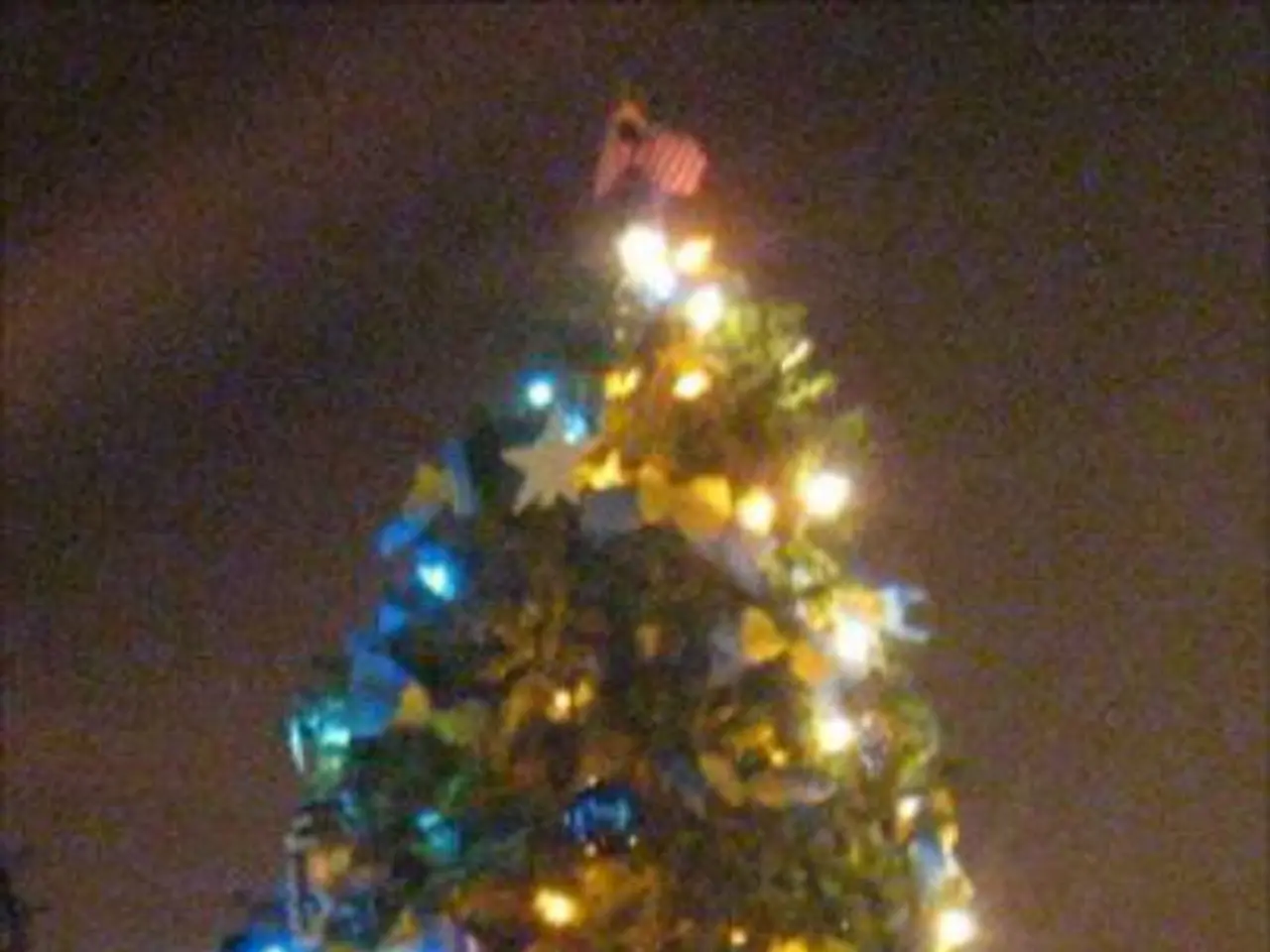Unveiling the Fascinating Historical Roots of Christmas Customs
In the heart of winter, as snowflakes fall gently and twinkling lights adorn homes, it's easy to forget that many of the customs we associate with Christmas have deep roots in history and mythology. Let's take a journey through time and explore the fascinating origins of some beloved holiday traditions.
The Yule log tradition, a central feature of Christmas celebrations in Northern Europe, can be traced back to ancient Scandinavia. It was a central element in pagan midwinter festivals, symbolising light and warmth during the darkest days of the year. This practice, which stems from older solstice celebrations like the Norse jól, was carried into medieval Christian Christmas customs, where the Yule log was symbolically burned during the holiday season [1][3][5].
The burning of the Yule log was believed to bring good luck, fertility, and protection against evil spirits during the cold and dark winter months [3]. Over time, this ritual evolved, inspiring the French "Bûche de Noël," a log-shaped Christmas cake that continues the symbolic nature of the tradition as a festive centrepiece [3].
The image of Santa Claus flying through the night sky in a sleigh pulled by reindeer has its origins in Norse mythology, specifically the eight-legged horse Sleipnir ridden by Odin. As Christianity spread across Northern Europe, Odin's image merged with that of St. Nicholas, evolving into the figure of Santa Claus we know today [2].
The tradition of giving gifts is another holiday custom with ancient origins. Gift wrapping has roots in Asian cultures such as Japan and China, where gifts were wrapped in furoshiki cloths and silk cloths respectively. Modern gift wrap, with its vibrant designs, ribbons, and bows, became a staple of holiday celebrations in the West by the mid-20th century [4].
One of the most iconic Christmas characters, Rudolph the red-nosed reindeer, entered the story much later in 1939, as part of a marketing campaign by Montgomery Ward [6]. Another modern addition to Christmas traditions is the Advent calendar, which originated in 19th-century Germany as a way for families to count down the days until Christmas. These calendars evolved into commercial chocolate-filled calendars in the mid-20th century [7].
The Christmas card tradition began in 1843 with Sir Henry Cole's commissioning of the first commercial Christmas card [8]. Since then, the exchange of cards has become a cherished part of the holiday season, spreading joy and well-wishes far and wide.
From the burning of the Yule log to the exchange of Christmas cards, these traditions have been shaped by the fusion of ancient mythology and modern commercial storytelling, creating one of the most enduring and magical symbols of Christmas [9]. So, as you gather around the twinkling tree, opening gifts and sharing laughter, remember that you're part of a long and rich history of holiday celebrations.
[1] Encyclopædia Britannica. (2021). Yule. Retrieved from https://www.britannica.com/topic/Yule [2] History.com Editors. (2020). The Real Santa Claus: The Life and Legend of St. Nicholas. Retrieved from https://www.history.com/news/the-real-santa-claus-the-life-and-legend-of-st-nicholas [3] History.com Editors. (2019). The History of the Yule Log. Retrieved from https://www.history.com/news/the-history-of-the-yule-log [4] History.com Editors. (2019). The History of Gift Wrapping. Retrieved from https://www.history.com/news/the-history-of-gift-wrapping [5] History.com Editors. (2020). How the Norse Celebrated Christmas. Retrieved from https://www.history.com/news/how-the-norse-celebrated-christmas [6] History.com Editors. (2020). The True Story of Rudolph the Red-Nosed Reindeer. Retrieved from https://www.history.com/news/the-true-story-of-rudolph-the-red-nosed-reindeer [7] History.com Editors. (2019). The History of the Advent Calendar. Retrieved from https://www.history.com/news/the-history-of-the-advent-calendar [8] History.com Editors. (2019). The History of Christmas Cards. Retrieved from https://www.history.com/news/the-history-of-christmas-cards [9] History.com Editors. (2020). How Santa Claus, Christmas Trees, and Other Holiday Traditions Evolved. Retrieved from https://www.history.com/news/how-santa-claus-christmas-trees-and-other-holiday-traditions-evolved
- The evolution of Santa Claus, a figure synonymous with the entertainment industry, can be traced back to Norse mythology, with the eight-legged horse Sleipnir ridden by Odin serving as a precursor.
- In the realm of lifestyle and fashion-and-beauty, the tradition of gift wrapping has its roots in Asian cultures, such as Japan and China, where gifts were wrapped in furoshiki cloths and silk cloths, respectively.
- The top 10 most fascinating Christmas traditions includes the iconic character Rudolph the red-nosed reindeer, which entered the story much later in 1939, as part of a marketing campaign by Montgomery Ward.
- The education-and-self-development sector has seen significant growth in the exchange of Christmas cards, with Sir Henry Cole's commissioning of the first commercial Christmas card in 1843 marking the beginning of this cherished holiday tradition.
- General-news outlets often report on the world of sports during the holiday season, but the origins of popular holiday traditions, like the burning of the Yule log or the advent calendar, often have deep roots in history and mythology, instead of being solely a product of modern commercial storytelling.




